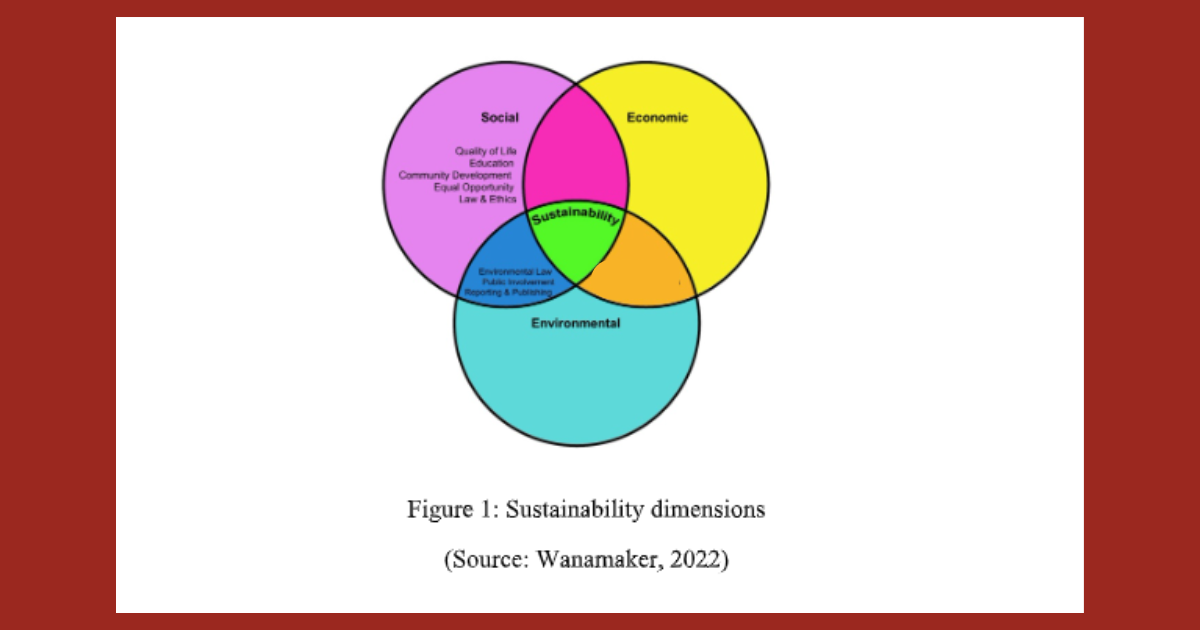SCI5170: Sector Sustainability Report Assignment Help

Question
SCI5170: In this assignment for ECU, Australia, the students are required to imagine themselves as a sustainability advisor for a particular organization. The students need to prepare a report assessing sustainability for the specific sector relating to the organization. To complete the report, the significant sustainability-related challenges need to be highlighted for the specific sector, which should be evaluated in comparison to the principles of sustainability set by the organization. Additionally, some recommendations should also be proposed based on this evaluation.
Solution
The solution presents a detailed report on the evaluation of sustainability for fast fashion brands like Zara, H&M, and Primark. The solution is divided into four sections- Identification of the sustainability-related issues, Review of existing sustainability principles and criteria used by H&M and Primark, evaluation of the alignment between existing sustainability norms and actual practices by fashion brands, and conclusion along with some recommendations for the brands.
Identifying the issue
In the first section, the sustainability-related issues for the above-mentioned brands are recognized. Our experts ensure the issues identified here are based on an evaluation of the sustainability and related reports published by the brands.
Sustainability is one of the major points of consideration for brands in the contemporary era; still, the leading global brands are lacking in the same, which is a serious concern due to the economic, social, and environmental aspects (Wanamaker, 2022; refer figure 1).

Want to know the issues identified by our experts? Give us a call at +61 871501720.
Review of existing sustainability principles and criteria used by H&M and Primark
This is followed by a review of the existing sustainability principles and criteria used by H&M and Primark. Keep a snippet of how our experts have presented a detailed review in this section.
Labour being an integral aspect of the organisation, deserves adequate attention for welfare and better treatment by the brand. Beginning from Primark, the brand has taken various positive steps to improve ethical practices in the context of workers. For instance, the brand is a signatory to Ethical trade initiatives and adopted its code of conduct. Yet, from the caring concern of workers, the ‘Primark Cares’ page contains that prior to finalising any 4 factory by the company, it is examined in line with the international code of conduct and recognised standards (Primark, 2022, p.10). On this note, factories are being examined at the end of the year for the last stage of production for the welfare of workers and other norms. Further, Primark ensures the adoption of various norms; however, like other fashion brands, it has less control over its supply chain due to outsourcing the majority of the work to others. Apart from this, the company has secured a score of 31-40% from the Index of Fashion Transparency, which is very low and shows inadequate policies or safeguarding norms to protect the interest of labour (Robertson, 2021a). H&M has greatly improved its labour welfare policies and the company has secured a score of 61-70% in the index of Fashion Transparency. The brand H&M also revealed indepth information about its policies relevant to suppliers, a list of suppliers at the final stage of production, and audit and remediation processes.
This is only 50% of the solution. To know more, WhatsApp us at +447956859420.

Evaluating alignment between existing sustainability norms and actual practices by fashion brands
Then, the solution provides a detailed assessment of the alignment between the norms related to the sustainability of the fashion brands and the practices undertaken by the brands. This is further divided into sub-sections corresponding to each of the issues identified above.
Exploitation of Labour
Fashion brand Zara’s scores are not sufficiently good in the context of labour (Zara, 2023a). Half of the production of the final stage of the brand is being undertaken in Spain, which is a medium-risk economy for labour abuse. Further, the brand has made little or no progress on its wages across the supply chain, which is unfair for such a high-revenue earning brand. As a result, over the past few years, a great number of allegations have been filed against Zara in different nations like Spain, Myanmar, Brazil, and Argentina (Zara, 2021).
Lack of transparency
Although Zara publishes information about its suppliers, the brand lacks complete information regarding equality, fair pay to labour and forming associations (Dockrill, 2022). Importantly, the brand has received a score of transparency around 50% aligning Fashion Transparency Index, which is not so great for such a big brand (Zara, 2021). Furthermore, the brand is engaged in carrying out audits, taking several sustainability measures and focusing on the welfare of labor; however, the majority of the information published relates to the parent company.
Poor animal welfare policy
The animal welfare policy of Zara, focusing on five freedoms perceives a strict prohibition on angora, fur and stocking the products assessed on animals. However, Zara tends to use exotic hairs of animal, wool, leather and down and unfortunately, there is less evidence that Zara traces any product of animal at its first production stage (Dockrill, 2022). Opposite to these, H&M is constantly doing more goods and H&M is doing more good because it uses wool gained by pain free processes and also banned the use of skin of animals and angora.
Unethical consumerism
Zara, one of the rapidly growing brands in the fashion sector, commits to the latest trends in fashion every 13 days. However, these rapid changes are harmful to both customers as well as environmental and labour perspectives (Dockrill, 2022). Although the brand has chosen the ‘closing the loop’ initiative; yet, the updating fashion frequently carries intense pressure on labour; they have to work with less safe conditions and over time with less pay (Leach, 2022).
Environmental impact
The fashion brand Zara has reported using and implementing LanzaTech’s technology to convert carbon emissions into the fabric, which is being done by using the process of fermentation despite manufacturing products from virgin fossil fuels (Leach, 2022). However, overproduction by the brand and the ‘buy to wear once mentality’ fuels the culture of overproduction which further sets off the concern of resulting in carbon emission and causing environmental threats. Moreover, the resulting textile is not made from 100% of the captured carbon and the brand is extremely responsible for Amazon deforestation (Zara, 2023a). Simply, Zara is responsible for perpetuating a trend that motivates people to wear as much clothing as possible, allowing the brand to produce tones of clothes every day. This is likely to end up in a landfill despite several efforts of Zara to reduce environmental pollution.
We have provided only a small part of the complete solutions written by our experts. If you need the complete section, don’t hesitate to WhatsApp us at +447700174710.
Conclusion and Recommendations
The last section provides a conclusion and some recommendations for the brands to enhance their sustainability practices.
Based on the overall evaluation, H&M is doing well compared to Zara and Primark.
Wish to know how our experts have demonstrated an application of the significant sustainability concepts in this report. You can contact us through mail as well- onlineassignmentservices1@gmail.com.

